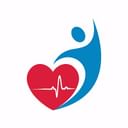Get the App
For Doctors
Login/Sign-up
Last Updated: Jan 10, 2023
BookMark
Report
Common Tests For Coronary Artery Disease!
Coronary artery disease or CAD is the name given to the heart condition in which the major blood vessels that supply your heart with blood, oxygen and nutrients, also called coronary arteries, get blocked, damaged or diseased.
- Blockages usually happen when cholesterol-containing deposits called plaque deposit in your arteries. Plaque narrows the lumen of your coronary artery which means your heart gets lesser and lesser oxygen and nutrients to function properly.
- Inflammation is also to blame for coronary artery disease.
Common symptoms of CAD include
- Angina or pain in the chest
- Shortness of breath
- If the blockage is complete, you can get a heart attack.
Common Diagnostic tests
When you go to a heart specialist, she will ask questions about your medical history and follow it up with a physical exam and order routine blood and diagnostic tests to confirm CAD like:
- Electrocardiogram (ECG): An ECG records electrical signals as they travel through your heart revealing evidence of a previous heart attack or one that’s happening. Holter monitoring is a type of ECG where you wear a portable monitor for 24 hours as you go about your normal daily activities. Abnormalities in the results suggest reduced blood flow to the heart signaling CAD.
- Echocardiogram: This test uses sound waves to produce images of your heart. It helps your doctor determine whether all parts of your heart wall are contributing to your heart's pumping activity. If certain parts are moving weakly it can mean damage to muscle due to a heart attack or because of receiving too little oxygen- again signaling CAD.
- Exercise Stress test: This test is done by making you do exercises like walking on a treadmill or riding a stationary bike during an ECG. Sometimes, medication to stimulate your heart may be used instead of exercise.
This again detects areas in your heart that receive less blood flow.
- Cardiac catheterization or angiogram. A special dye is injected into your coronary arteries to observe blood flow through your heart in a test known as an angiogram.
- The dye is sometimes also injected into the arteries through a long, thin, flexible tube called catheter that is threaded through an artery in your leg to the arteries in your heart. This procedure is called cardiac catheterization. This test is very good in diagnosing CAD as the dye outlines narrow spots and blockages on the X-ray images of your heart.
- Heart scans. Computerized tomography or CT can help your doctor actually see calcium deposits in your arteries that can be narrowing your arteries. If a substantial amount of calcium deposits are found, coronary artery disease could be the reason.
- MRI scans are also done to diagnose CAD. If you wish to discuss about any specific problem, you can consult a Cardiologist.



+1.svg)
